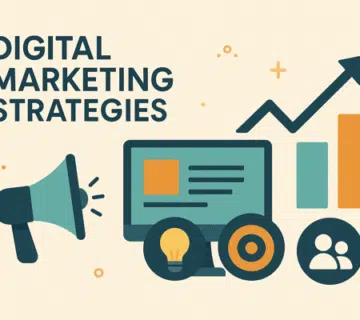Conversion Rate Optimization (CRO)
What Is Conversion Rate Optimization (CRO)?
Conversion Rate Optimization (CRO) is a process aimed at increasing the percentage of website visitors who take a specific action, such as completing a purchase or signing up for a newsletter. CRO is a vital element of digital marketing strategies, where marketers seek to improve the user experience on websites, leading to higher engagement and sales. The conversion rate is closely tied to website performance, and its improvement can significantly contribute to achieving business goals.
The conversion rate is measured by dividing the number of visitors who complete a desired action by the total number of visitors, then multiplying the result by 100 to get a percentage.
For example, if 100 people visit a website and 5 of them make a purchase, the conversion rate would be 5%. This percentage is a crucial indicator used to assess the effectiveness of marketing strategies and to identify strengths and weaknesses in the user experience.
It’s important to distinguish the conversion rate from other performance indicators, such as total visits or average session duration. While the conversion rate focuses on tangible results from user behavior, other metrics reflect different aspects of user interaction with the website. For this reason, businesses and marketers should pay attention to all indicators and develop integrated strategies centered on conversion rate optimization to enhance campaign effectiveness and increase financial returns.

Strategies for Improving Conversion Rate
CRO is a crucial component of any marketing strategy aimed at increasing sales and improving website performance. One of the most effective strategies to achieve this is enhancing the user experience (UX).
Companies must ensure that visitors interact with the website in a smooth and intuitive way. By developing a clear and simple user interface, bounce rates can be reduced and session duration extended—both of which increase the likelihood of conversion.
Additionally, the design elements used on web pages play a significant role. These include the selection of colors, fonts, and imagery, all of which help guide user interaction. Attractive design elements—such as prominent call-to-action buttons—can effectively drive visitors toward making a purchase decision.
Visitor behavior should also be analyzed using tracking tools like Google Analytics to understand how users interact with the website and identify areas that may need improvement.
A key aspect of conversion rate optimization is enhancing landing pages. These pages must be designed to immediately capture the visitor’s attention and clearly communicate value. Elements such as compelling headlines, concise content, and simplified contact forms play a major role in influencing visitor behavior. By implementing these strategies, companies can effectively increase their conversion rates and sales, contributing to long-term success.
Tools for Measuring and Analyzing Conversion Rate
Tools for measuring and analyzing conversion rate are essential for improving marketing campaign performance, as they help understand user behavior and identify factors influencing purchasing decisions.
One of the most widely used tools in this field is Google Analytics, which provides comprehensive data on website traffic and detailed insights into user behavior.
Google Analytics allows marketers to understand what contributes to increases or decreases in the conversion rate by tracking visited pages, time spent on site, and engaged content.
It can also be used to identify traffic sources, helping marketers allocate resources to the most effective channels.
Another important tool is A/B Testing, an effective method for testing specific changes in website design or content. By splitting users into two groups, marketers can assess which version leads to higher conversion rates, thereby improving the overall user experience. This method is ideal for testing elements such as page headlines, call-to-action buttons, and design colors.
Other data analysis tools like Hotjar and Crazy Egg offer features such as heatmaps and session recordings, allowing marketers to see how visitors interact with their pages. These tools help marketers gain deeper insights into user behavior, enabling them to enhance the experience and boost conversion rates.
By using these tools and analyzing the data they provide, marketers can improve the effectiveness of their strategies to increase sales and conversions, achieving business objectives more quickly and efficiently.

The Importance of CRO for Business Growth
Conversion Rate Optimization (CRO) is a fundamental pillar of modern business strategies, as it directly impacts competitiveness and economic growth. The conversion rate is a key indicator of the quality of the customer experience offered by a company and reflects the effectiveness of its marketing strategies and offers. By improving this rate, companies can find new ways to boost profitability and reduce costs, significantly contributing to business expansion.
CRO becomes especially important as companies compete to attract customers and generate substantial sales. For example, one study showed that businesses investing in CRO saw a 20% increase in sales—demonstrating the clear impact of these strategies. Additionally, CRO helps reduce customer acquisition costs by encouraging businesses to focus more on existing customers rather than spending heavily on advertising to attract new ones.
Moreover, CRO strategies provide valuable insights into customer behavior, helping companies better understand their preferences and needs. This understanding can lead to personalized offers and an improved user experience, which fosters customer loyalty and increases repeat purchases. There are many examples of companies that achieved significant growth thanks to CRO strategies; for instance, Amazon relies on consumer behavior analysis to deliver personalized recommendations, resulting in a notable boost in sales.
Achieving success in today’s competitive business environment is difficult without making CRO a core part of the overall strategy. Companies that adopt these practices will be better positioned for sustainable growth and increased profitability.








I conceive you have mentioned some very interesting details , regards for the post.